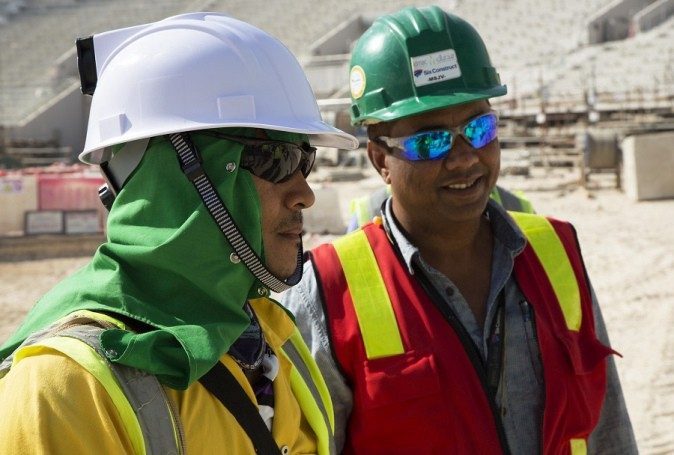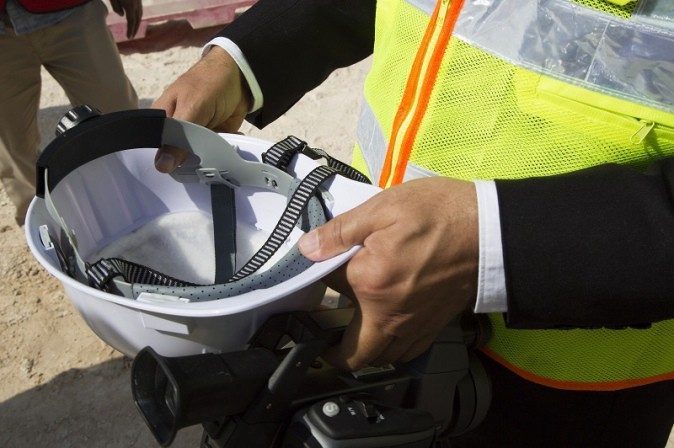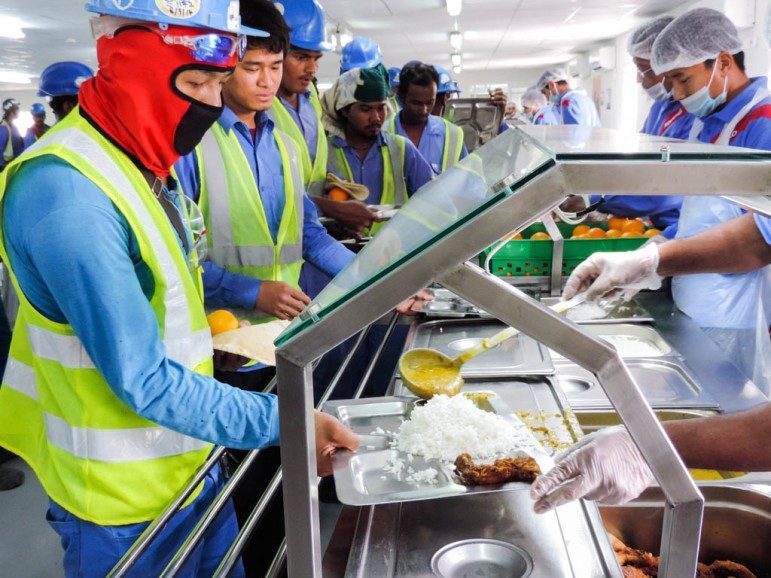
Construction workers on 2022 World Cup projects in Qatar will have an easier time keeping cool this summer with the help of some new hard-hats.
In the coming months, the workers will be given solar-powered cooling helmets that were developed by researchers at Qatar University, tournament organizers have announced.
The helmets can reduce skin temperature by up to 10C. This makes it easier for those working outdoors to survive Qatar’s searing summer heat, which regularly surpasses 40C.

The helmet is about 300g heavier than a typical hard-hat. It has been tested to ensure its effectiveness and safety, the Supreme Committee for Delivery and Legacy (SCDL) said in a statement.
How it works
Equipped with a small solar panel, the helmet uses a solar-powered fan to blow air over a cooling material at the top of the hat.
New cooled helmets from @QatarUniversity and @aspirezone will be keeping SC workers cool and safe this summer. How do they work? pic.twitter.com/mVJ8TSz4HM
— Road to 2022 (@roadto2022) December 19, 2016
This “will then come down over the front of the person’s face and provide a cooler micro-climate for the worker,” said Dr. Saud Abdul-Aziz Abdul-Ghani, a professor at QU’s College of Engineering.
He added:
“By reducing the temperature of the head and face, the rest of the body will naturally follow and ensure that workers have a constant flow of cooler air to refresh them throughout their day.”
Worker treatment
Qatar companies’ treatment of expat blue-collar workers have been under scrutiny in recent years.
Rights groups have been putting pressure on FIFA to improve the quality of working and living conditions here for many.

World Cup organizers have responded to criticism by establishing a workers’ charter, improved accommodation and even permitting a trade union to accompany inspectors at their construction sites next year.
However, the number of expats working directly on tournament projects remains small — around 10,000 people.
In the coming year, this is expected to more than triple to 36,000 people, according to the SCDL.
But this is still a fraction of the hundreds of thousands of migrant construction workers in the country.
For most of these men, high-tech cooling gear remains out of reach.
However, last year, local firms that sell such products did say they are starting to see increasing sales.
Thoughts?






